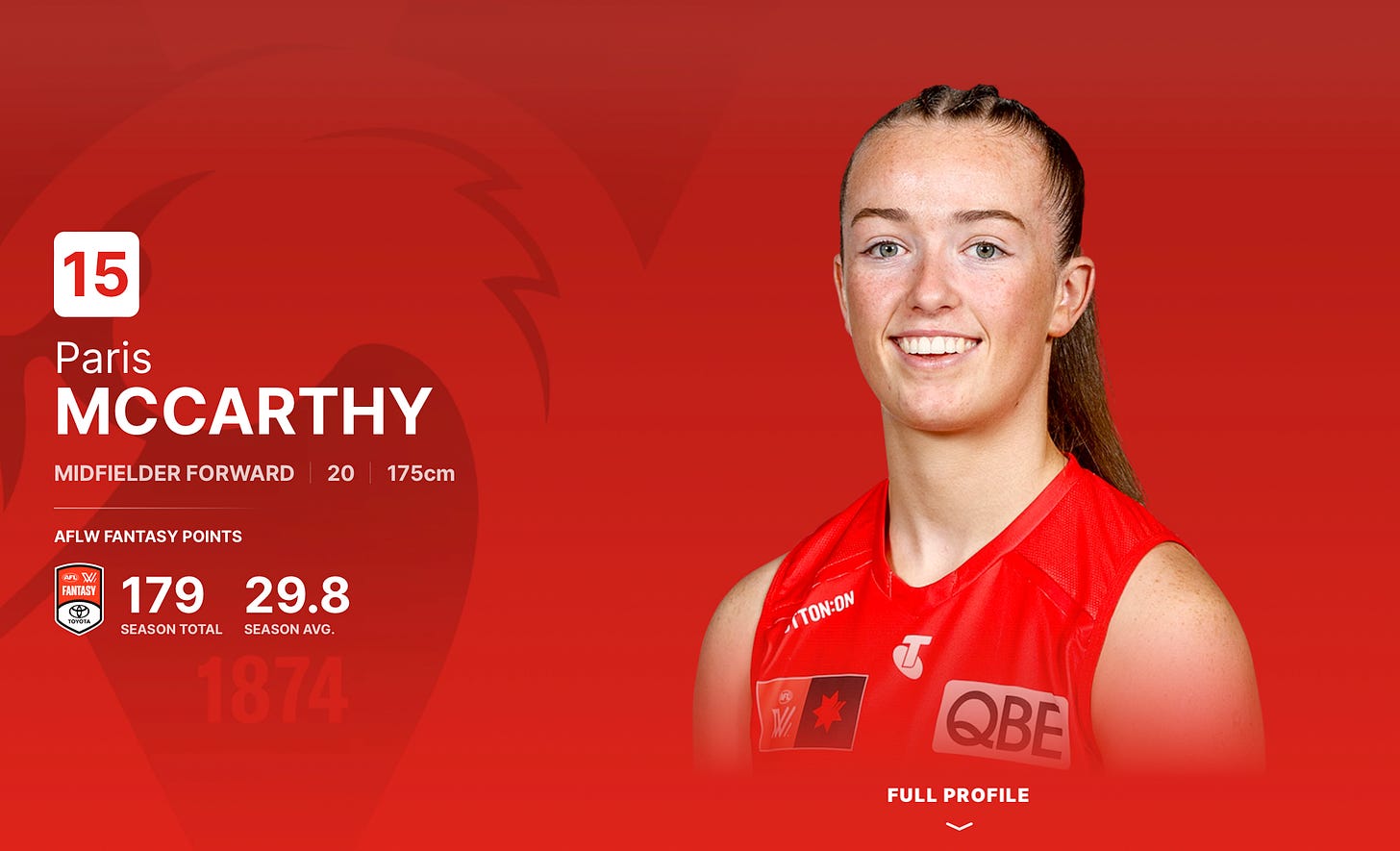
A news report on January 13th revealed that the Australia Football League, or AFL, is implementing a new policy where player body weights will no longer be listed in the official season guide.
This may come as a surprise to many of you who closely follow sports and know that body weight is a descriptive metric of players that has been reported for many years in various sports. So, why the change?
According to the report, the AFL has deemed that body weight is private information and inappropriate for publication. No other details on the decision were provided in the report. One commentator referred to the decision as “soft,” but this explanation begs the question – where is the softness coming from?
I want to explore the topic in more depth because I believe the decision of de-listing player body weights could be linked to the increased involvement of women in the AFL. And if this link is true, I believe it should be acknowledged and understood.
The AFL consists of both a men’s league and a women’s league. If we look at examples of male and female player profiles from the AFL’s website, as shown below, we can see that there is one metric missing from the female player profiles that is present in the male player profiles. That metric is body weight. Keep in mind that the policy of delisting body weight is currently aimed at the printed season guide, not the players’ online profiles, though I suspect the policy will eventually also apply to online profiles.
This lack of reporting of body weights in the online profiles of women’s AFL players likely pre-dates January of this year and is interesting for a couple of reasons.
First, it reinforces a stereotype about women that they do not want their body weights made public because they are more sensitive or self-conscious of their weight than are men. This stereotype is of course a reality, as various studies have shown that women have lower body esteem and satisfaction than men, and women tend to underreport their body weights, whereas men tend to overreport their body weights.
The second reason that the lack of reporting of female player body weights is interesting is because it suggests a sort of special accommodation for female AFL players. What I mean by this is that for many years, with regard to women’s sports participation, we have been told that women can do anything that men can do and that they can experience anything that men can experience. Yet, in this example, it seems that the female athletes do not want the same experience as the male athletes, and they do not want to give to the fans who pay their salaries the same information that the male players have historically given to their fans. This type of occupational manoeuvring parallels that of women who want the same jobs or salaries of men, so long as they do not have to experience the same sort of occupational risk or critique that men experience.
At this point, you might be thinking to yourself, “But Nuzzo, the whole point of getting rid of male body weights is to allow for men to receive the same accommodation or treatment that has been granted to the female players.”
This line of thinking, however, is problematic. It implies that men and women have the same interests and that what is done in the women’s league should serve as the gold standard for the men’s league. It implies that male and female players have similar views toward their body weights and whether they want their body weights to be public knowledge. But do male and female players really have the same views when it comes to public knowledge of their body metrics? I doubt it. I did not see a survey of male AFL players asking them whether they wanted their body weights de-listed. If given the option to answer such a question, I suspect most male AFL players would either say that they do not care if their body weight is public knowledge or that they prefer that it be public knowledge.
For some men, their body weight, or other body metrics, could serve as a source of pride or accomplishment. For example, a male player who adds a couple of kilograms of muscle mass in the off-season due to his dedication to rigorous training might be proud that he achieved an increase in body weight, and he may want his fans and competitors to know about this achievement. Or a player who punches above his weight might take pride in the fact that even though his overall stature is small, he can still mix it up with the big boys. He might want adolescent male footy players who are small in stature to know that small guys can play in the big show too.
I believe the decision to no longer list male body weights was likely caused by a sort of spill over effect from the women’s league combined with an influence from increased numbers of female staff within the AFL, who themselves have likely been influenced by the disproportionate number female professors who write papers on topics such as “weight stigma,” “weight bias,” “fat stigma,” “fat shaming,” and “body shaming.” Put more succinctly, the softness is the result of the feminization of the AFL. And this feminization appears to be associated with a lack of understanding of sex differences in psychology and an underappreciation of and desire to understand the male sporting experience. For many male athletes, having their body weights made public will not be a big deal, particularly as they are some of the most physical fit individuals in the world.
Moreover, to the extent that the women’s league or female staff have influenced the men’s league on this decision, one can then start to see the legitimacy of concerns about women entering into historically male spaces. Most men probably do not care one way or another if there is a women’s AFL league, so long as the women’s league does not negatively impact upon the men’s league. Delisting body weights is unlikely to impact game play, or the number of fans who show up for games, though it will make game announcers’ ability to describe players and their interactions on the field more difficult. Instead, the worry is that this type of decision might be just one of a thousand tiny feminine scratches that gradually chip away at the overall male sporting experience.
And a final question remains – if body weight will be delisted from player profiles, then why would body height also not be delisted? The answer to this question is that body height is not a metric that women – whether in academia, the corporate boardroom, or on the playing field – are so sensitive about. Female players are likely more concerned about their body weight being made public knowledge than their body height, because the shape and weight of a woman’s bodyis a key attribute that men consider when judging whether they find a woman physically attractive. Men, particularly in western countries, are most physically attracted to women who are thin or fit. In contrast, body height is a physical attribute that women place a high value on when selecting a mate. Women like tall men. Consequently, as we live in a world that accommodates to the sensitivities and preferences of women, the body metric often used by men to judge female attractiveness and reproductive value is removed from player profiles, whereas the body metric often used by women to judge the mating value of a man remains.
This is gynocentrism.
Oh, and by the way, if you happen to go to an AFL game this year, and buy a copy of the season guide, make sure to hold onto it for a while. Because, given current societal trends, it could be the last time you see another very sensitive metric listed: player age.
Related Content at The Nuzzo Letter
SUPPORT THE NUZZO LETTER
If you appreciated this content, please consider supporting The Nuzzo Letter with a one-time or recurring donation. Your support is greatly appreciated. To donate, click the DonorBox logo. In two simple steps, you can donate using ApplePay, PayPal, or another service. Thank you.





















Share this post